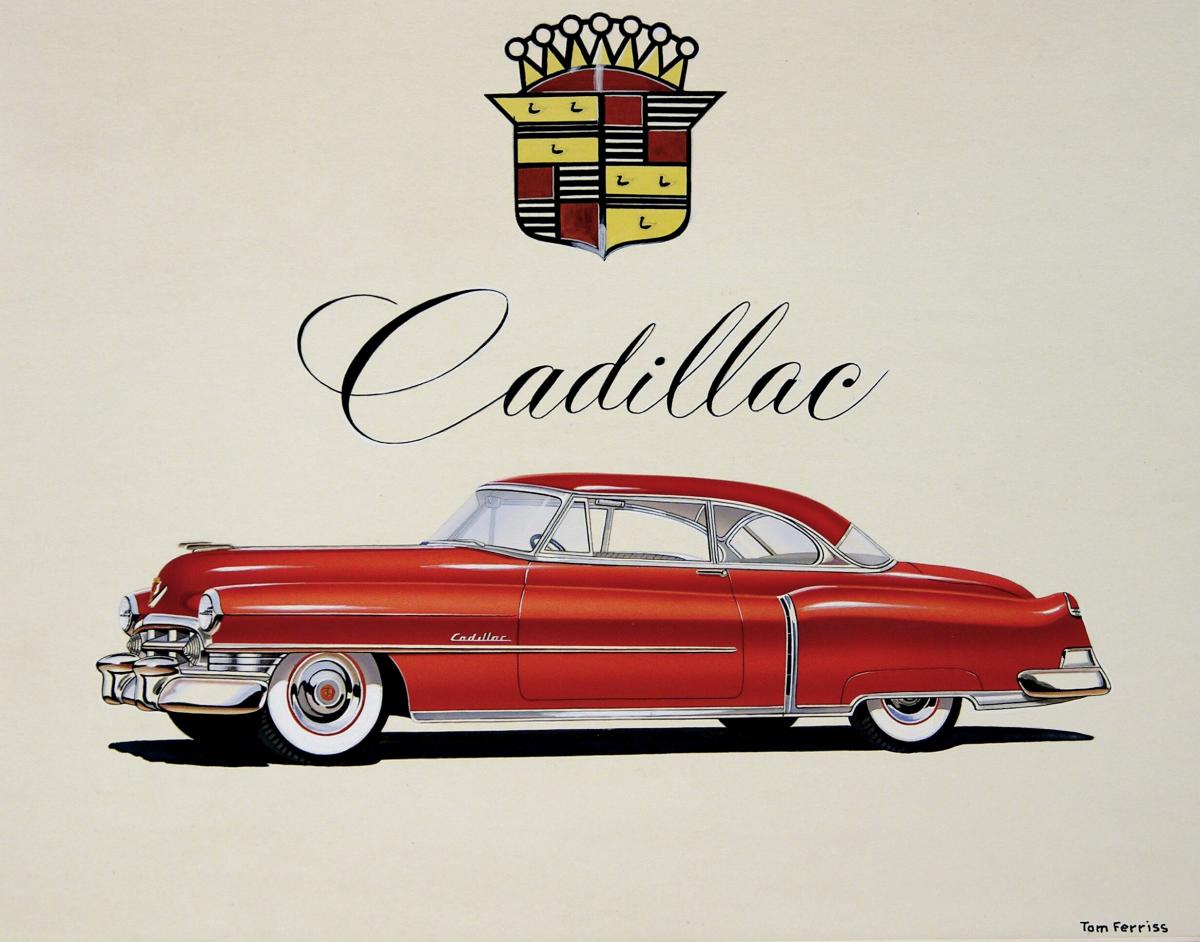
01 Sep Future Retro: Car Drawings from the Great Age of American Automobiles July 1 – October 30, 2016
The optimism of the American postwar era ushered in what is now regarded as the ‘great age’ of automotive art, a moment when American engineering know-how was matched to a resurgence of artistic talent, yielding some of the finest automotive design drawings ever produced.
If the twin fields of automobile and industrial design had already emerged in the 1930s, it was the growth of consumerism after the war years that forced an evolution towards ‘styling’ and the emergence of a second generation of car designers groomed in the studio system of the Detroit automakers. There, styling answered consumer demand for futuristic design, for performance or utility, presented through an array of themes that partook of advertising: romance, dynamism, or the family.
Whatever stability and prestige automobile designers gained through the institutionalization of their profession, it is also the studio system that diminished the artistic merit that attached to their work. The bulk of design drawings tended to be discarded as non-art—as the functional by-product of the car design process. Yet as this exhibition makes clear, these are marvelously rendered works every bit as loaded with cultural meaning and aesthetic value as more traditional ‘high art’ drawings.
The Redwood Library gratefully acknowledges support from collectors Jean S. and Frederic A. Sharf, as well as the kind cooperation of the MFA, Boston.
FLOWERING OF AN ART FORM
The soaring American car market after WWII was the driving force behind the emergence of automotive art, a subspecialty that evolved from the technical drawings of automobile production to the color advertising of glossy period magazines.
PRODUCTION vs. CONCEPT
Illustrations of production cars, such as the four Oldsmobile sedans at right, can be understood as highly finished presentation drawings, the result of a long process of design and refinement. Concept car drawings, such as those at center and far right, were used by designers to evoke and evaluate often fanciful themes and ideas.
PERFORMANCE AND THE ROAD TO THE ‘MUSCLE CAR’
Technological advances achieved during the war years combined with the postwar space age to create an emphasis on performance. Conflating flight with auto travel, the styling and engineering of high performance cars drew on developments in aviation technology, culminating in the ‘muscle car’ of the late 1960s and early 1970s.
CADILLAC: ‘STANDARD OF THE WORLD’
The oldest automobile brand after Buick, Cadillac has always occupied a place at the top of the luxury market in the United States. As such, Cadillac combined style and technical innovation—like the electric starter early in the century, or the curved glass windshield, one of the defining features of automotive design after WWII.
SELLING THE DREAM
Car design was always in step with consumer demand, just as technical drawings could bleed into advertising art. Car designers thus sold more than cars. Rather, they sold a lifestyle, and no two themes were better matched to sleek new cars than sport and romance.
STYLING: INTERIOR AND EXTERIOR
Car interiors, as well as external elements, were an extension of the general styling of a car, be it sporty or utilitarian. The drawings arrayed here from left to right show the range: dashboard and fin detail drawings recall aviation (left); wild patterns and bright colors exemplify the permissive 1970s (center); interior styling and instrumentation a Corvette’s signature high performance (right).
GENIUS OF THE UNKNOWN ARTIST
Working in the sphere of industrial design at the service of car makers or advertisers, artists specializing in automotive drawing remained largely nameless illustrators, this despite being both highly trained and incredibly gifted. The drawings shown here are the work of Portsmouth resident Dale Gustafson, one of the top illustrators working for Pontiac and Buick during the 1950s and 1960s.

Sorry, the comment form is closed at this time.